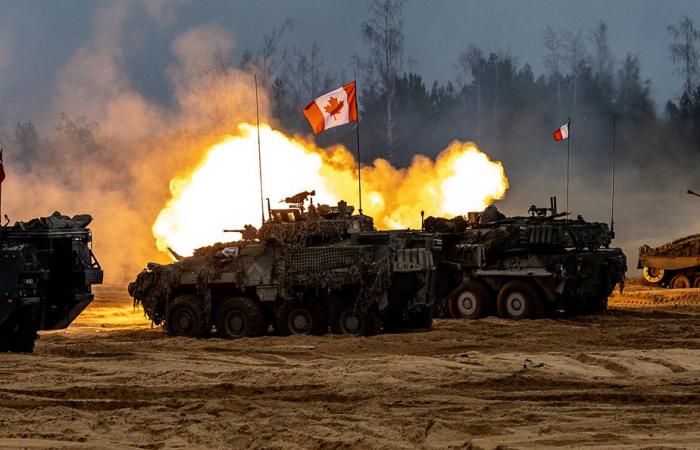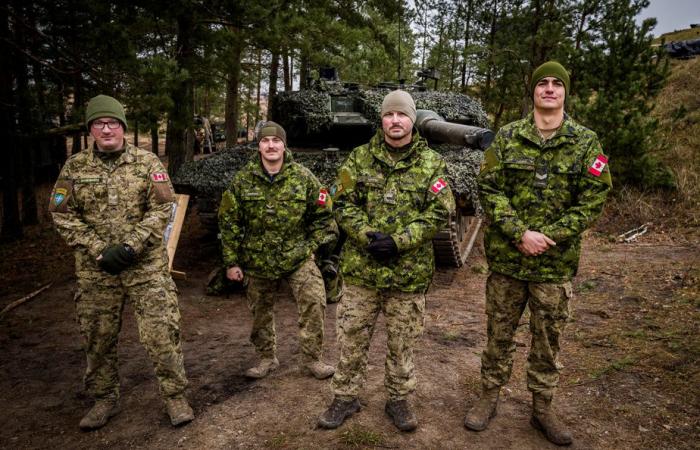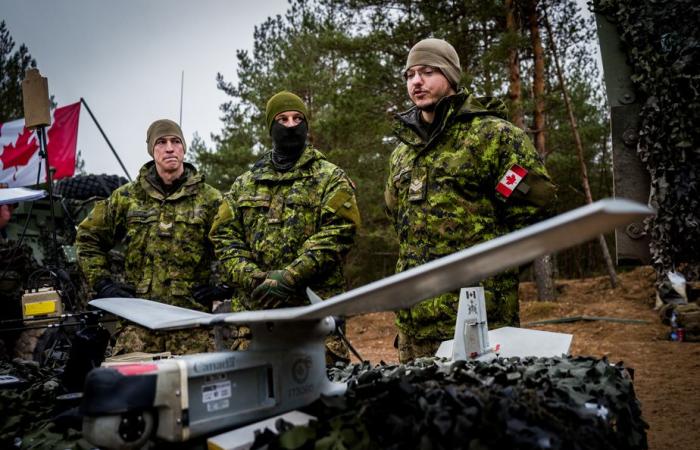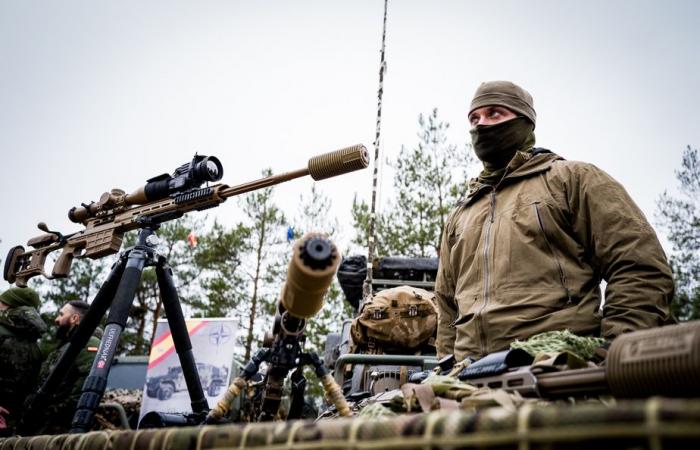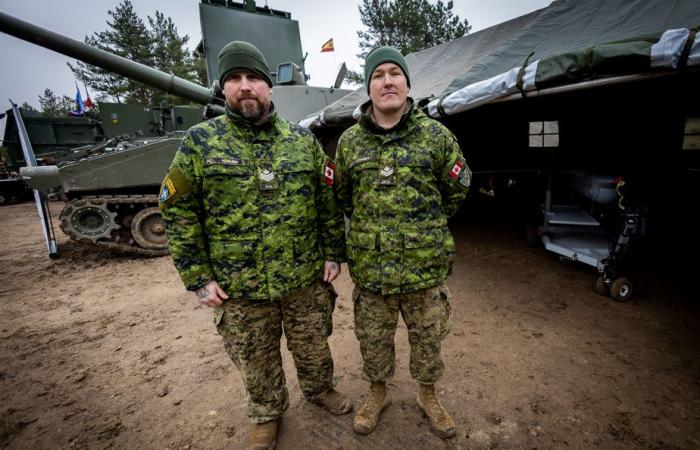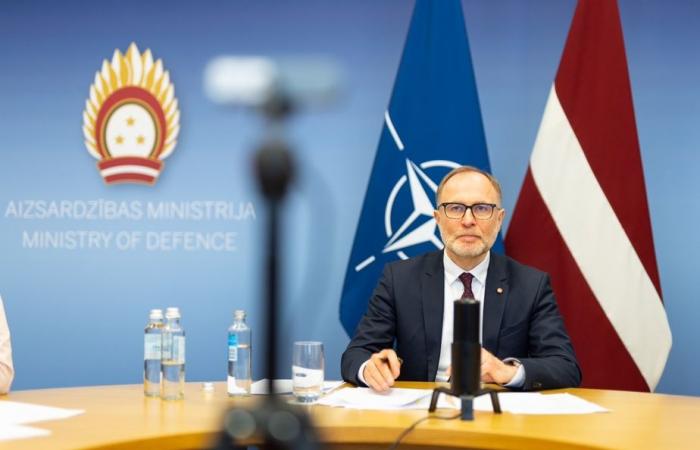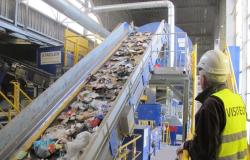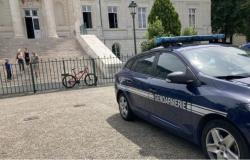Canada now has more than 2,000 “combat ready” troops deployed in Latvia, in order to deter any Russian attack on the small Baltic country. Here are some key pieces of equipment in their toolbox.
Published at 5:00 a.m.
Leopard 2 assault tank
PHOTO DOMINICK GRAVEL, LA PRESSE
A Leopard 2 tank with its crew from the Royal Canadians regiment of Edmonton, under the direction of Warrant Officer Hayes (3e starting from the left)
The centerpiece of the army, a behemoth of around sixty tonnes capable of reaching nearly 70 km/h. In the hands of an experienced driver, over rough terrain, it seems to maneuver as easily as a small 4×4 on a dirt track, digging furrows two feet deep into the ground and throwing up swirls of mud at the surroundings. “The vehicles always need a lot of maintenance, but those challenges were overcome quite well during the exercise,” said Warrant Officer Hayes, a tanker with the Royal Canadians from Edmonton. The Danes and the Spanish use the same tanks within the brigade, meaning spare parts are interchangeable as needed.
Drone Raven B
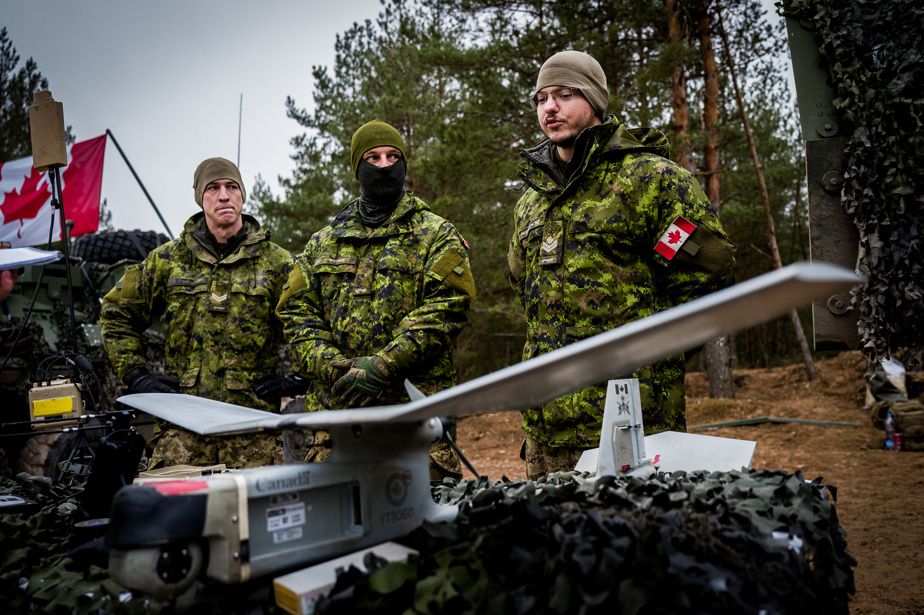
PHOTO DOMINICK GRAVEL, LA PRESSE
Master Corporal Pigeon-Piché (right), both drone pilot and machine gunner on a tactical armored patrol vehicle
Some Canadian motorized reconnaissance teams carry a Raven B drone that can be arm-launched and deployed within a 10 km radius. “We use the Raven B to have eyes in the sky and on the battlefield,” explains Master Corporal Pigeon-Piché, who combines the roles of drone pilot and machine gunner on a tactical armored patrol vehicle. The drone can even follow the vehicle in the air while moving to locate enemy troops. “It becomes a fairly complex task, but it is doable,” says the master corporal. This American-designed drone model is used by the armed forces of around thirty countries.
Snipers
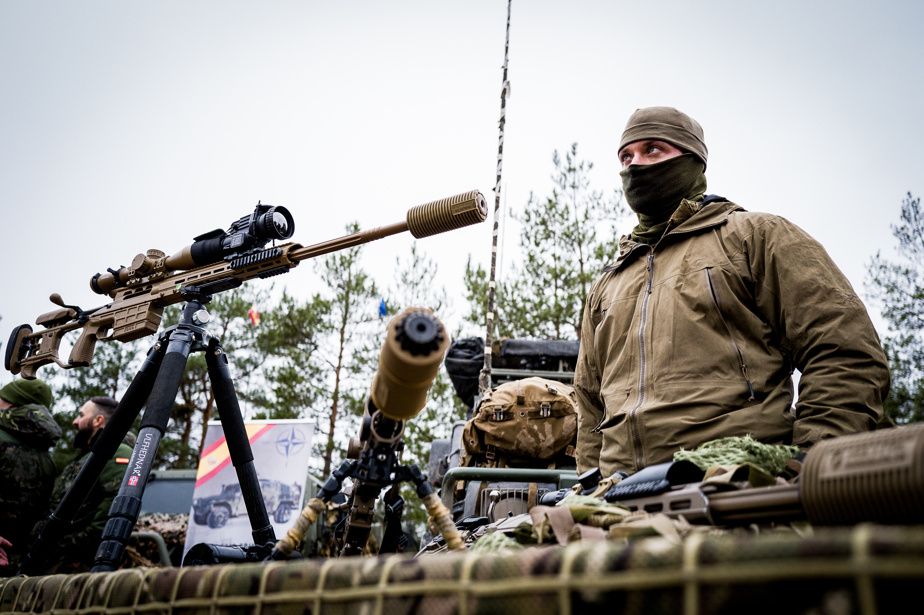
PHOTO DOMINICK GRAVEL, LA PRESSE
Using their rifle equipped with a telescope, snipers can hit a target 2 km away.
Snipers of 2e Valcartier battalion have been in Latvia for several months. In a battle, they may be required to infiltrate behind enemy lines, to neutralize priority targets before the start of the battle, then guide artillery fire. They carry a rifle with a telescope that can hit a target 2 km away. “Currently, here, we have several means of integration. We can use boats, helicopters, four-wheelers, anything,” explains the sergeant. “The officer in command can say: I need you to destroy this. In mechanized warfare, for example, they can often be used against anti-tank weapons. »
Mid-range radar
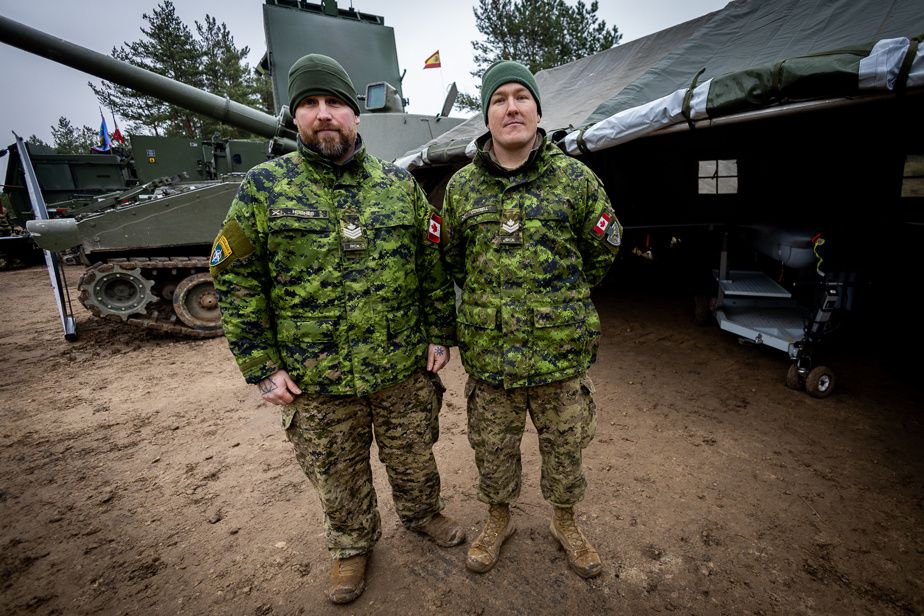
PHOTO DOMINICK GRAVEL, LA PRESSE
In the background, behind an armored vehicle, we can see the medium-range radar deployed by the army in Latvia.
For the first time, Canada has deployed a medium-range radar in Latvia responsible for detecting any aerial threat. “Airplanes, cruise missiles, drones… we can also detect hostile artillery fire,” says Sergeant Josh Bayer. “It is essential in an environment like this to have the necessary equipment to respond to aerial threats. We have some that have arrived and they will continue to arrive in the coming months,” says General Jennie Carignan, number 1 of the Canadian Armed Forces. She points out that last September, a Russian armed drone entered Latvian airspace, causing concern. “Our adversaries will measure how we respond to all this,” she said.
Are they welcome?
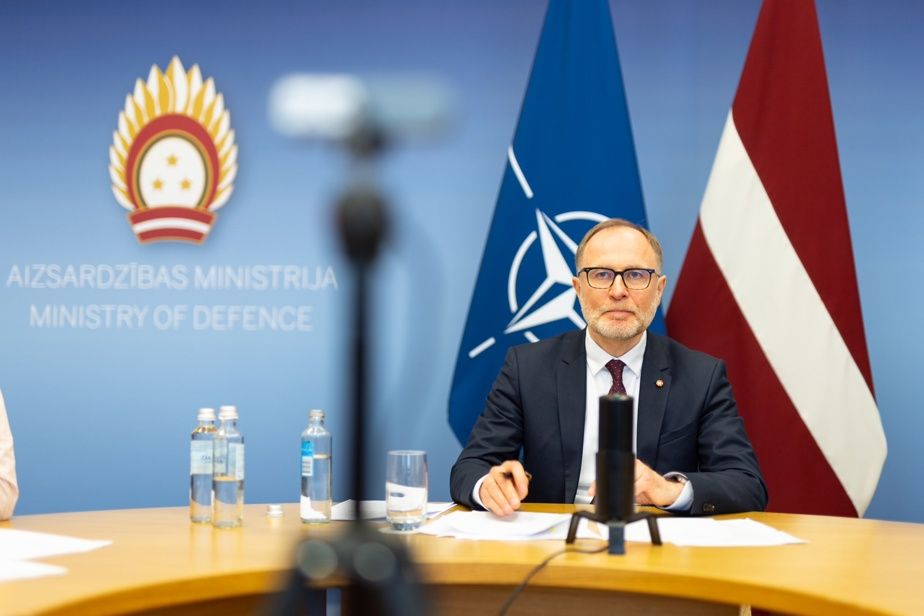
PHOTO FROM THE X ACCOUNT OF ANDRIS SPRŪDS
Andris Spruds, Minister of Defense of Latvia
Canadian officials continue to praise the welcome of the Latvian population. Privately, however, soldiers emphasize that there are certain neighborhoods and certain pro-Russian businesses where NATO forces are not welcome. About 23 percent of Latvia’s population identifies as ethnic Russian, and the government has announced the possible expulsion of those who refuse to learn the Latvian language. “The vast majority of the population is very grateful for Canada’s contribution,” assures the Minister of Defense of Latvia, Andris Sprūds. Of course, we are a democracy, and sometimes there are people who see things differently. It’s a small minority. Russian-speaking populations are diverse. The absolute majority is loyal, patriotic and welcomes the Canadian presence here as a sign of strength and unity. »

